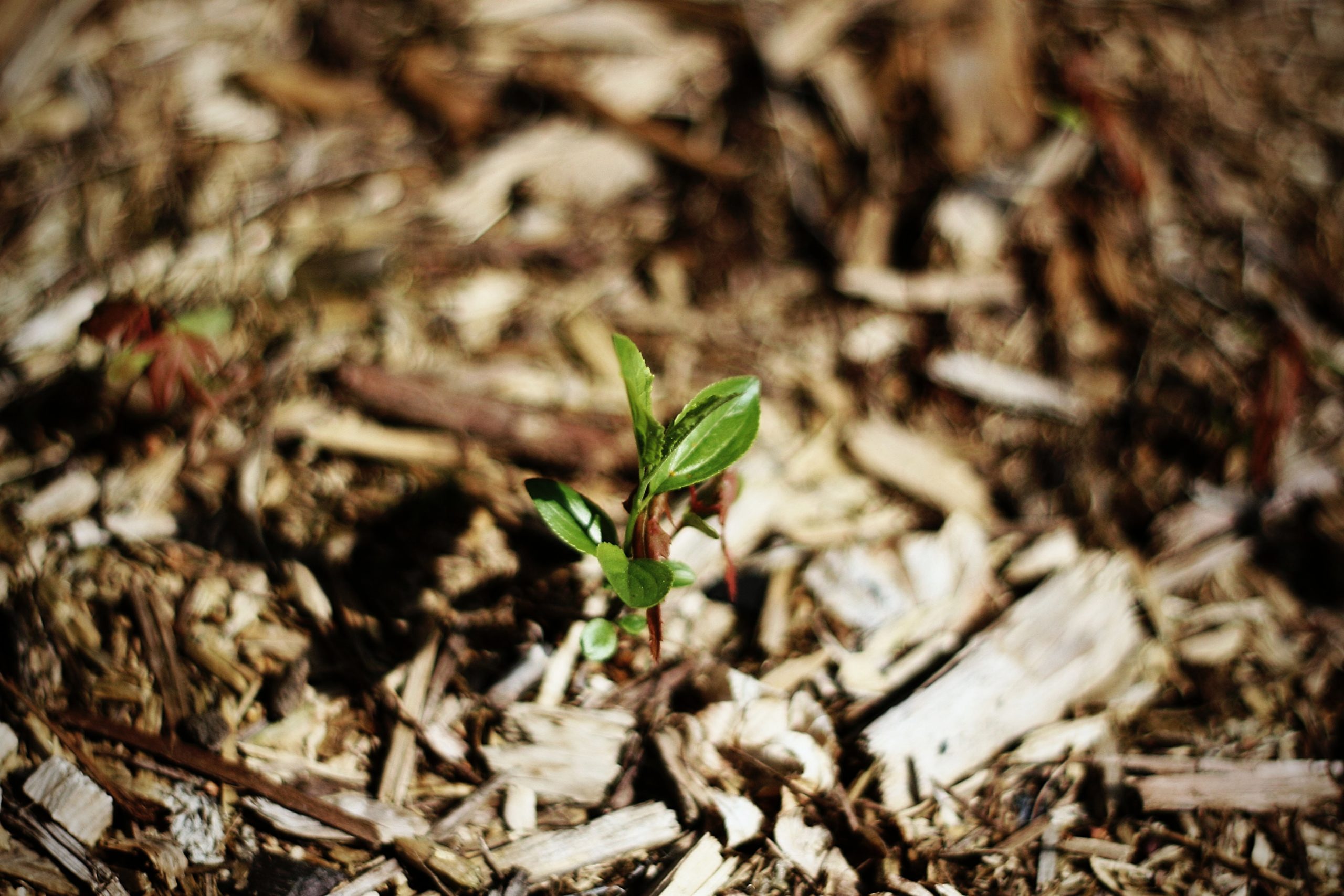11.7.16 – Mulching may seem intimidating, but it is not as difficult as it seems, and it can be very beneficial to the health and size of citrus trees. How much can adding a natural extra layer on top of the soil really do? This piece was written by Food Forward staff and Catherine Achy, one of our student interns from UCLA, and is part of our essential series on fruit tree care.

What is mulch?
Mulch is any type of organic material that is spread over soil as a cover. Some examples include bark, twigs, leaves, wood chips, grass clippings, pine needles, newspaper, cardboard, compost, and manure.
Mulch has many benefits for soil and plants. By covering the soil, it reduces the evaporation rate from the soil, locking in moisture and increasing the amount of water available to plants and soil biology (and cutting down your water bill!). This also keeps the soil temperatures cooler. In addition, it breaks down over time to provide nutrients for microorganisms in the soil which increases biodiversity. The drier and thicker the mulch, the longer it will take to break down into soil. Mulch will suppress the growth of weeds and can have add a nice aesthetic to a residential yard.
Especially important for us here in Southern California, citrus trees treated with green manure have been shown to be larger in tree and fruit size than those treated with animal manure.
How to Mulch?
Food Forward recommends that all tree owners mulch their trees in order to save water and increase the health of the trees. This could be as easy as leaving the leaves that fall from the tree. There are also sometimes local options for free mulch in your community including local tree trimming companies, holiday straw bales, and excess plant material from other parts of yours or your neighbors’ yards. Many garden care stores also sell a variety of mulch types for landscaping use. We recommend choosing a natural mulch rather than a synthetic mulch so the tree receives added benefits.
- Add a 2 to 4 inch layer of mulch around the base of the tree. This prevents weeds from growing while still allowing water to reach the soil.
- Keep the mulch 12 to 24 inches away from the tree trunk. Mulch, and the water it stores, can contribute to fungi growth.
- Maintain your mulch layer year round.
What to use?
Natural and organic mulches decay over time, adding nutrients to the soil, making them a better alternative to their synthetic counterparts. Yard waste is an easy and cost-effective option. Using yard waste as mulch helps to solve the urban waste disposal issue. 20% of soil waste in landfills is yard waste, and using this to mulch instead of throwing it away helps to lessen this amount.
- Grass trimmings
- Fallen leaves
- Pine needles
- Compost
- Wood chips from local trees
You can read more about mulching at http://homeguides.sfgate.com/gardening/. Mulch, mulch, mulch! And after you mulch, be sure to check out our other resources for tree-lovers like you here:
